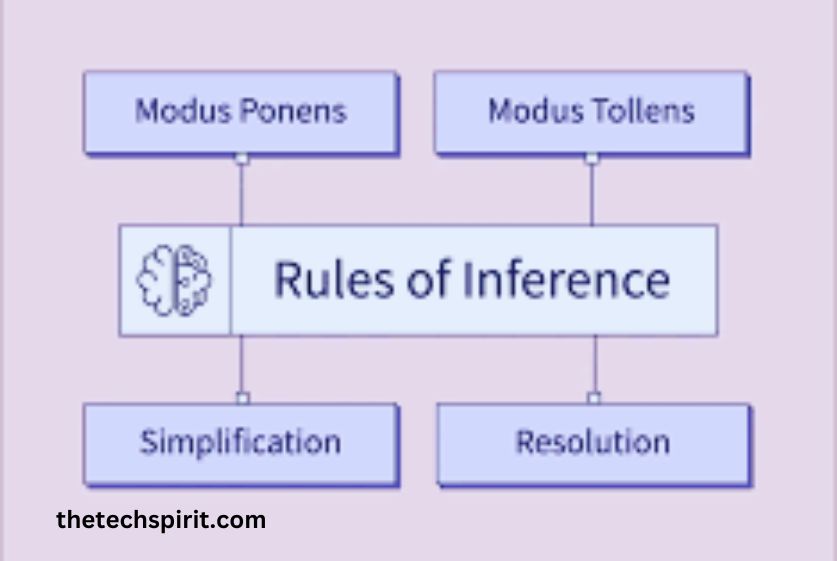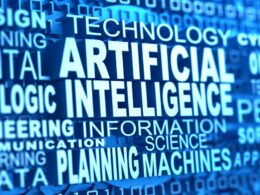In the field of artificial intelligence (AI), inference rules play a crucial role in enabling machines to make logical deductions and draw conclusions from a given set of premises. These rules are the backbone of various AI systems, empowering them to reason, learn, and make intelligent decisions. Join us as we explore the fascinating world of inference rules in artificial intelligence and their impact on the advancement of AI.
Table of Contents
What are Inference Rules?
Defining Inference Rules
Inference rules are logical constructs that allow AI systems to derive new knowledge or conclusions from existing information or premises. These rules are based on the principles of formal logic and provide a systematic way of reasoning and making inferences. They act as the building blocks for AI systems, enabling them to process and manipulate data in a meaningful and intelligent manner.
The Role of Inference Rules in AI
Inference rules are fundamental to the functioning of AI systems, as they bridge the gap between raw data and actionable insights. By applying these rules, AI algorithms can analyze information, identify patterns, and make informed decisions based on the available knowledge. Inference rules are the driving force behind many AI applications, such as expert systems, automated reasoning, natural language processing, and machine learning.
Types of Inference Rules
There are various types of inference rules, each serving a specific purpose and enabling different forms of logical reasoning. Here are some of the most commonly used inference rules in Artificial Intelligence:
Modus Ponens
Modus Ponens is a fundamental inference rule that states:
“If P is true, and if P implies Q, then Q must also be true.”
This rule is widely used in deductive reasoning and forms the basis for many AI systems that rely on logical inference.
Modus Tollens
Modus Tollens is the counterpart of Modus Ponens and states:
“If P implies Q, and Q is false, then P must also be false.”
This rule is particularly useful in refuting or eliminating hypotheses that are inconsistent with observed data.
Hypothetical Syllogism
The Hypothetical Syllogism rule combines two conditional statements to form a new conditional statement. It follows the pattern:
“If P implies Q, and Q implies R, then P implies R.”
This rule is essential for chaining together logical implications and making more complex inferences.
Disjunctive Syllogism
The Disjunctive Syllogism rule deals with disjunctive (either/or) statements. It states:
“If P or Q is true, and P is false, then Q must be true.”
This rule is useful in scenarios where one needs to choose between two mutually exclusive options based on available information.
Resolution
Resolution is a powerful inference rule used in automated reasoning and theorem proving. It combines two clauses or statements to produce a new clause or statement, effectively reducing the problem to a simpler form. This rule is particularly important in areas like logic programming and problem-solving.
Applications of Inference Rules in Artificial Intelligence
Inference rules have diverse applications across various domains of AI, enabling intelligent systems to tackle complex problems and make informed decisions. Some of the key applications include:
Expert Systems
Expert systems are AI programs that mimic the decision-making ability of human experts in specific domains. Inference rules are the backbone of these systems, allowing them to reason and draw conclusions based on accumulated knowledge and expertise.
Automated Reasoning
Automated reasoning involves the use of computer programs to automatically derive conclusions from a set of premises or axioms. Inference rules play a crucial role in this process, enabling AI systems to perform logical deductions and solve complex problems.
Advantages of Inference Rules
The use of inference rules in AI systems offers several advantages, including:
Logical Reasoning
Inference rules provide a solid foundation for logical reasoning, allowing AI systems to draw conclusions and make decisions based on well-defined principles of logic. This capability is essential for tasks that require rigorous reasoning and decision-making.

Knowledge Representation
Inference rules offer a powerful way to represent and encode knowledge in AI systems. By capturing domain-specific rules and relationships, these systems can effectively model and reason about complex real-world scenarios.
Efficient Decision-Making
By leveraging inference rules, AI systems can make efficient decisions by systematically evaluating available information and drawing logical conclusions. This leads to faster and more accurate decision-making processes, which are crucial in time-sensitive applications.
Challenges and Limitations
Despite their numerous advantages, inference rules also present some challenges and limitations:
Complexity
As the number of inference rules and the complexity of the knowledge base increase, managing and reasoning with these rules can become computationally intensive, leading to performance issues and scalability challenges.
Knowledge Acquisition
Acquiring and formalizing the necessary knowledge to construct a comprehensive set of inference rules can be a daunting task, especially in domains with a high degree of complexity or uncertainty.
Uncertainty
Traditional inference rules are based on Boolean logic and may struggle to handle uncertainty or probabilistic information, which is often encountered in real-world scenarios. Addressing uncertainty requires the integration of probabilistic reasoning techniques.
Future Trends and Advancements
The field of inference rules in AI is constantly evolving, with researchers exploring new approaches and techniques to address current limitations and enhance the capabilities of AI systems. Some of the future trends and advancements include:

Integration with Deep Learning
Combining the power of inference rules with deep learning techniques holds great promise for creating more interpretable and explainable AI models. By incorporating logical constraints and domain knowledge into deep neural networks, researchers aim to develop hybrid systems that combine the strengths of both approaches.
Probabilistic Inference
To better handle uncertainty and deal with real-world complexities, researchers are exploring probabilistic inference methods that can reason with uncertain or incomplete information. These techniques incorporate probability theory and statistical models into the inference process, enabling AI systems to make more robust and nuanced decisions.
Explainable AI
As AI systems become more pervasive in decision-making processes, there is a growing need for transparency and interpretability. Inference rules can play a crucial role in developing explainable AI systems that can provide human-understandable explanations for their decisions and reasoning processes.

Conclusion
Inference rules are the cornerstone of logical reasoning in artificial intelligence, enabling machines to conclude, make decisions, and solve complex problems. From expert systems to automated reasoning and natural language processing, these rules have proven to be invaluable in a wide range of AI applications.
As technology continues to advance, the role of inference rules in AI will only become more prominent. By combining these rules with emerging techniques like deep learning and probabilistic inference, researchers are poised to develop more powerful, interpretable, and robust AI systems capable of tackling real-world challenges with unprecedented sophistication.
Whether you’re a researcher, developer, or simply an enthusiast of AI, understanding the fundamentals of inference rules is crucial to appreciating the remarkable capabilities of modern AI systems and the exciting possibilities that lie ahead.
FAQs
What is the difference between deductive and inductive inference rules?
Deductive inference rules, such as Modus Ponens and Modus Tollens, allow you to derive logically valid conclusions from a set of premises. In contrast, inductive inference rules, like those used in machine learning, involve making probabilistic generalizations or predictions based on observed data.
Can inference rules handle uncertain or incomplete information?
Traditional inference rules based on Boolean logic may struggle with uncertain or incomplete information. Researchers are exploring probabilistic inference techniques that can reason with uncertainty by incorporating probability theory and statistical models into the inference process.
Are inference rules limited to specific domains or can they be applied across various fields?
Inference rules are general logical constructs that can be applied across various domains, including expert systems, automated reasoning, natural language processing, and machine learning. The specific rules and knowledge representation may vary depending on the domain and application.
How are inference rules incorporated into machine learning algorithms?
While machine learning algorithms primarily rely on statistical models and data-driven approaches, inference rules can be used to incorporate domain knowledge and logical constraints into the learning process. This can lead to more interpretable and robust models, especially in complex or heavily regulated domains.
What are the challenges associated with the integration of inference rules and deep learning?
One of the main challenges in integrating inference rules with deep learning is bridging the gap between symbolic reasoning and sub-symbolic representations used in neural networks. Additionally, ensuring the consistency and scalability of the combined system can be a significant challenge, requiring careful design and optimization.









